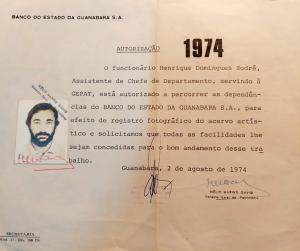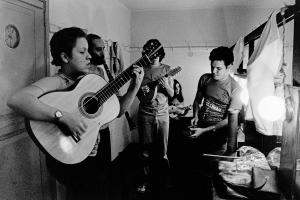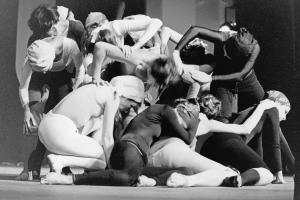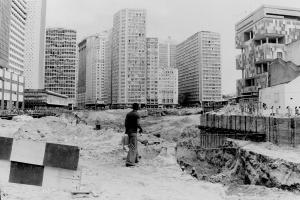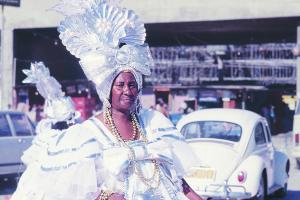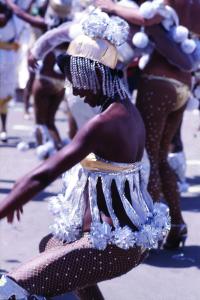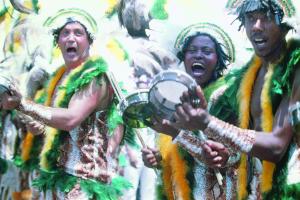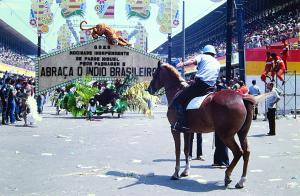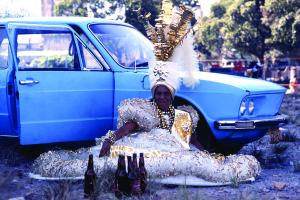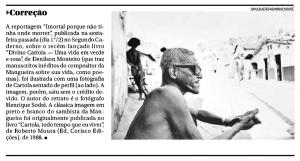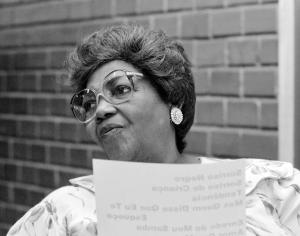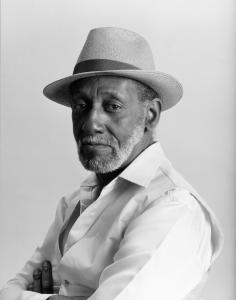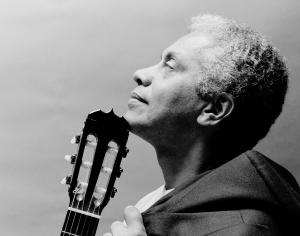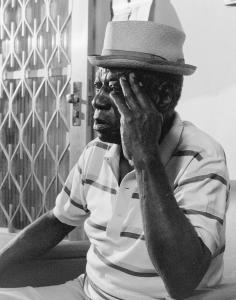Henrique Sodré was born in 1942 in a small town in the state of Minas Gerais, which borders the state of Rio de Janeiro, Brazil. Sodré eventually moved to the city of Rio de Janeiro, where he became a teller within the state bank. His real passion, however, involved music and photography. A samba enthusiast and a fan of graphic arts, Sodré took courses in both, while continuing working at the bank. He had a special interest in Black performers of samba, many of whom he became acquainted with. Sodré was also very interested in Brazilian politics, a theme that is also present in his work. Retired today, he has four sons and two grandsons. One of his sons, João Gabriel Rabello Sodré, is a graduate student at Georgetown University.
In this exhibition, João Sodré curates a selection of photographs from Sodré’s 40-plus years of photographing Carnival, Samba, politics, and his city of Rio de Janeiro. In connection with the exhibition, Georgetown’s Department of Performing Arts will present a Friday Music Series event on September 30 featuring Samba performers Rogério Souza (7-string guitar), Stephen Guerra (6-string guitar), and Gigi Maclaughlin (percussion).
For more information on the Friday Music Series, see:
https://performingarts.georgetown.edu/events-and-tickets/friday-music-series/
Photography Authorization
1974
This document permitted Sodré to take photographs on the premises of his employer, the state-run bank Banco de Estado da Guanabara S.A.
Performances and Everyday Life in Rio
Musicians
1977
2020.20.4856
The 1970s saw the revival and professionalization of Brazilian instrumental genre choro, which emerged in the nineteenth century and gained new contours in the decade. In the picture, Luciana and Raphael Rabello among others.
Quilombo Samba School
1978
left: 2020.20.1888 ; right: 2020.20.1902
The Quilombo samba school is an alternative samba association that sought to question the commodification of carnival in the mid-1970s, and to re-center debates around racial justice. Here the group is commemorating the 90th anniversary of the abolition of slavery in Brazil.
Dancers
1977
2020.20.4256
Nina Verchinina (1910-1995) was a prominent Russian-Brazilian modern dance choreographer. Pictured here is a performance of her ballet "O barroco na dança" (The Baroque in Dance).
Political Parade
1984
2020.20.4736
With the success of Brazil's first open gubernatorial elections since the early 1960s, the Brazilian people called for a complete return to democracy. The Diretas Já (Direct Now) protests (1984) demanded direct presidential elections (rather than the indirect system the military regime had used to hand-pick candidates). The picture shows a group parading by Avenida Presidente Vargas, a major avenue in Rio de Janeiro.
Soccer at Ipanema Beach
ca. 1975
2020.20.4821
In an extremely unequal society, this soccer scene stands out. Ipanema beach was often a space for the leisure of the wealthy, but could also be a place of interaction among social classes and people from different racial backgrounds.
Largo da Carioca
1970s
2020.20.2186
Since colonial times, the area known as Largo da Carioca has played an important role in Rio's life. The proliferation of late modernist office buildings in the mid-20th century evoked a path towards modernity that contrasted with the difficult lives of cariocas (natives and residents of Rio de Janeiro) and with the surrounding colonial-era buildings. This picture shows Rio's Carioca subway station under construction.
Lapa
1978
2020.20.2358
Rio's bohemian neighborhood of Lapa and the colonial-era Carioca aqueduct. Long after losing its primary function, the structure was converted into a tram bridge.
Street Scene
1970s
2020.20.2182
A group of people crossing the street in downtown Rio, during the military dictatorship (1964-1985). Sodré's photograph emphasizes the rigorous march of civilians and a military officer, all covered by the anonymity of an undemocratic society.
Carnival
Member of the Ala das Baianas
1983
2020.20.2811
All samba schools have an ala das baianas, a section of the carnival parade reserved for women above a certain age.
Samba School Imperio Serrano
1982
left: 2020.20.1507 ; right: 2020.20.2112
A section inspired by eighteenth-century French attire.
Mocidade Musicians
1983
2020.20.2070
Musicians' section in the parade of samba school Mocidade, inspired by the indigenous mythology and contemporary struggles of the Xingu people.
Mocidade Independente (Independent Youth)
1983
2020.20.2699
Samba school Mocidade Independente's parade inspired by indigenous mythology.
Portraits
Cartola (1908-1980)
1973
2020.20.2140
Cartola, born Agenor de Oliveira, was one of the founders of the samba school Mangueira. In the 1930s and 1940s his songs were broadcast on national radio. In the 1960s, his restaurant Zicartola became a stage for new samba talents.
Notice in O Globo newspaper
2013
O Globo published one of Sodré's photos of Cartola in 2013, but neglected to credit him as the photographer. This notice corrected the oversight.
Clementina de Jesus (1901- 1987)
ca. 1977
2020.20.2599
Clementina de Jesus was born only thirteen years after the abolition of slavery in Brazil, and grew up with the music of her enslaved forebears. Her extraordinary talent was "discovered" by music producers when she was over 60. Her recording of traditional Afro-Brazilian songs shed light on the legacy of slavery and resistance.
Dona Ivone Lara (1922-2018)
1990-2009
2020.20.400
Dona Ivone Lara, performer and composer, gained prominent space as a Black female artist amidst male-dominated spaces.
Nelson Sargento (1924-2021)
1994
2020.20.1687
Nelson Sargento was a samba composer and performer best known for his lyric "samba agonizes but does not die."
Paulinho da Viola (b.1942)
1996
2020.20.2443
Paulinho da Viola is a samba and choro composer and performer. From the beginning of his career in the mid-1960s, he has put his own stamp on music deeply rooted in local traditions. He is a two time Latin Grammy Award winner, with past performances worldwide, including at Carnegie Hall.
Babaú da Mangueira (1914-1993)
1992
2020.20.215
Babaú da Mangueira was a member of a prominent samba school in Rio de Janeiro. He recorded with several Brazilian popular music artists, including Cartola, whose portrait is also part of the exhibition. This is a set picture from the movie Babaú na casa do cachaça: verde e rosa blues (Babaú in the Cachaça House: Green and Pink Blues).
João Sodré, PhD Candidate, Department of History: exhibition curator
Christen Runge, Art Collection Assistant Curator: exhibition liaison
The curator wishes to acknowledge his former collaborator Vítor Atunes and his brother Ricardo do Amaral for their inspiration and contributions, as well as Professor Bryan McCann, LuLen Walker, and Christen Runge for their support and guidance.

